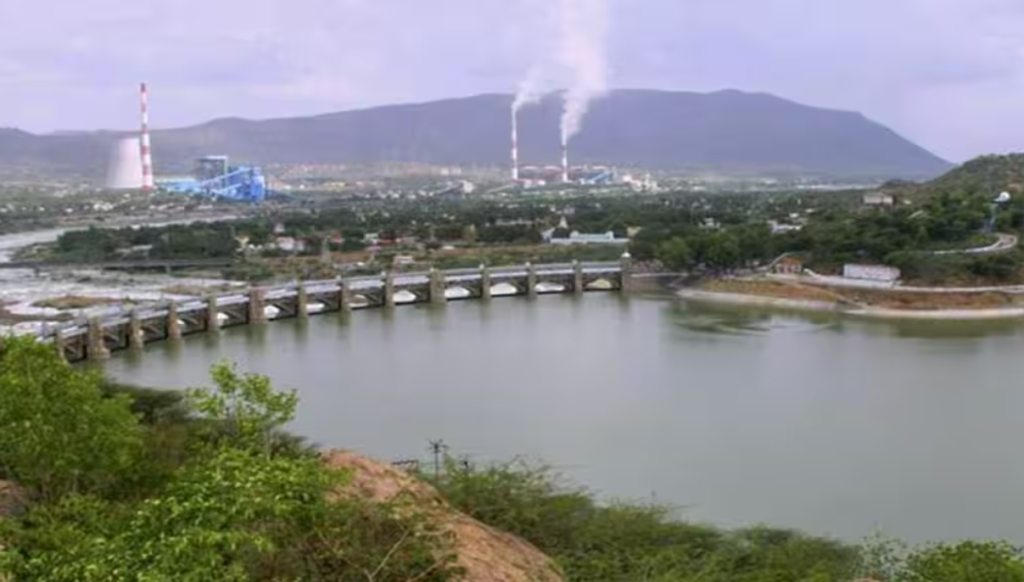Widespread water contamination has emerged as a formidable challenge in India, with a staggering 1,95,813 habitations across the country reporting inadequate water quality.
By Pratim Raha and Abishek Kumar
Rivers, with their innate natural charm, serenity, and crucial ecological significance, have long held our fascination. They are not mere bodies of water but rather the life force of our planet, coursing through ecosystems, nurturing life itself. Unfortunately, this enchanting beauty is now under threat due to the improper handling of sewage waste.
A report from the Central Pollution Control Board (CPCB) in 2015 has revealed that nearly 37,000 million litres per day (MLD) of “untreated” sewage water is discharged into rivers across the nation. Yamuna River in Delhi, which grapples with a substantial influx of pollution stemming from domestic sewage and industrial waste, culminates in severe contamination. In a 2018 report by the Central Pollution Board, it was revealed that 17 rivers in Karnataka were contaminated. By the close of 2022, these 17 river stretches were producing around 884.25 million liters per day (MLD) of sewage.
The rapid growth of cities, industries, and populations has led to the once-pristine waters now being contaminated by a mix of harmful substances. The perilous pollution jeopardises river ecosystems, endangering aquatic life, and communities that surround it.
Dealing with water contamination
Widespread water contamination has emerged as a formidable challenge in India, with a staggering 1,95,813 habitations across the country reporting inadequate water quality, thereby posing a grave threat to the public. According to a study published in The Lancet, water pollution has been attributed to more than half a million deaths in India alone in 2019, underscoring the far-reaching global impact of water pollution, which is responsible for a staggering 1.4 million deaths worldwide.
This stark reality not only poses grave health risks but also underscores the significance of World Rivers Day, celebrated annually on the fourth Sunday of September worldwide, to raise awareness about rivers’ critical role and their mounting susceptibility to climate change.
The government is increasingly acknowledging the pressing nature of the situation and is taking decisive measures to protect their rivers. They are bolstering policies and regulations, aiming for stricter oversight of industrial discharges and sewage treatment procedures. Moreover, the government is making substantial investments in the expansion and enhancement of sewage treatment infrastructure to accommodate the escalating needs of urban areas.
An illustrative example of such an effort is the Namami Gange Programme, initiated in 2014 and overseen by the National Mission for Clean Ganga (NMCG). This collaborative endeavour involves coordination among central and state government entities, local authorities, and various stakeholders. While the program has achieved notable successes, it also grapples with ongoing challenges linked to the intricate problems of pollution, water management, and river conservation within the Ganga River basin. Furthermore, the government has launched initiatives like the Atal Mission for Rejuvenation and Urban Transformation (AMRUT) and the Smart Cities Mission of the Ministry of Housing & Urban Affairs to combat water pollution comprehensively.
Waste treatment
Advanced wastewater treatment facilities, combined with the adoption of eco-friendly methods, hold significant potential for substantially reducing the pollution that enters our rivers. The emerging startups within the waste sector are going to play a pivotal role in tackling this urgent issue by pioneering innovative technologies and solutions for sewage waste and pollutant treatment. They are committed to responsible waste management, ensuring that pollutants are properly treated before being released into water bodies.
One such exemplary enterprise is Mudita & Radhesh, with a specific focus on transforming waste materials like Butchery Chicken Waste into valuable resources. Their primary objective involves developing innovative solutions aimed at transforming waste materials into valuable resources, thereby mitigating the volume of waste deposited into rivers.
Another noteworthy enterprise, Bintix, works towards a zero-waste future by offering door-to-door waste management services for various waste types. Their digital platform tracks the movement of waste from the point of origination to the recycling center, ensuring that plastics and other waste don’t end up in the rivers. In addition, Jal Sevak leads the way in pioneering on-site greywater recycling in India. Greywater, which results from activities like bathing and washing, is a form of mildly polluted wastewater. Their IoT-based innovative approach revolves around recycling greywater in households and public toilets, thus reducing the volume of wastewater entering sewers and pits—a critical step in the fight against water pollution.
Recognizing the potential of innovations in addressing waste management and disposal challenges, the Swachhata Startup Challenge, a collaborative initiative between the Ministry of Housing and Urban Affairs (MoHUA) and Agence Française de Développement (AFD), was launched and implemented by Villgro. This initiative seeks to boost efficiency, societal impact, and transparency while reducing single-use plastics. It encourages local innovations in waste management, including collection, recycling, upcycling, and sustainable products. It also fosters partnerships between urban bodies and startups to promote innovative technology adoption.
Promising collaborations led by the Indian government and organizations like AFD are key in the fight against river pollution, offering hope for a cleaner and sustainable future. By pooling resources and expertise, stakeholders can implement holistic solutions, while public awareness and community involvement empower individuals as local river custodians. At an individual level, people can combat river pollution by using biodegradable paints, avoiding dumping waste, reporting oil disposal and littering, joining cleanup efforts, and refraining from ash immersion.
Through collective action, responsible waste management practices, and a shared commitment to safeguarding our precious waterways, we can pave the way for a brighter tomorrow—one where our rivers flow unpolluted and thrive, providing for generations to come.
(The authors: Pratim Raha and Abishek Kumar are part of Climate Action, Villgro, a social enterprise incubator. Views expressed are personal.)
Article Credits: Financial Express
